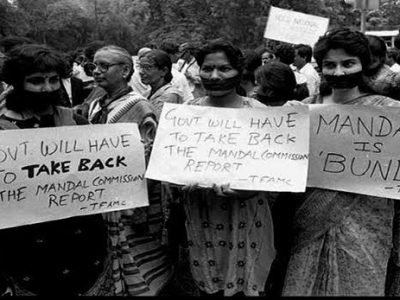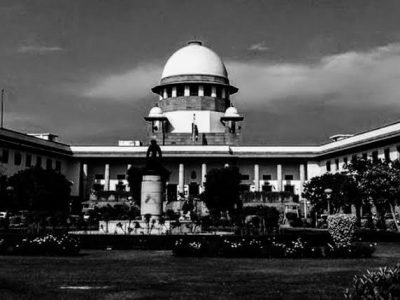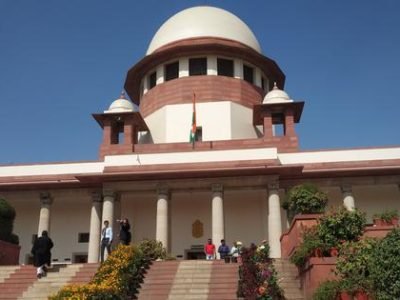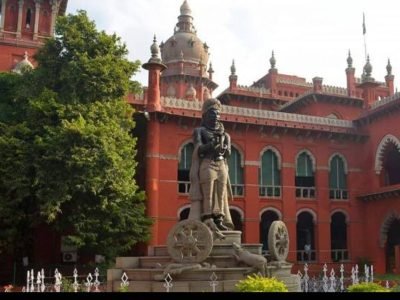Author: Shruti Majumdar, 3rd year student at Department Of Law,University Of Calcutta.
Introduction
The first case in India to have resulted in a conviction for sending lewd messages over the internet, under the contentious section 67 of the Information Technology Act, 2000 was the case of Suhas Katti v. Tamil Nadu. [1] Suhas Katti is a noteworthy case in which the Chennai Cyber Crime Cell successfully obtained a conviction within seven months of lodging an FIR. In India, this case had a major effect on incidents of cyberbullies.
A woman reported to the police that a man was sending her lewd, defamatory, and offensive messages via a Yahoo chat party. In addition, the accused forwarded emails received in a fictitious account he set up in the victim’s name. The victim even got phone calls from strangers who thought she was looking for sexual services.[2] In this case, the electric mode was the key evidence that proved the commission of the offence, for which the offender was charged under Section 67 of the ITA 2000, in addition to Sections 469 and 509 of the IPC.[3]
The case had a far-reaching influence, setting a precedent for the courts and inspiring people to file lawsuits relating to online abuse. Section 67 thereafter ran into controversy after the Government used the section to impose a partial ban on pornographic content in India with activists contesting the ambiguous concept of “obscene” in the section that could be used to exclude any sexually explicit content.[4]
Essential Details Of The Case
Citation: CC No. 4680 of 2004.
Court: Metropolitan Magistrate, Egmore.
Petitioner: State of Tamil Nadu.
Respondent: Suhas Katti.
Bench: Court of Chief Metropolitan Magistrate, Egmore.
Date of Judgement: November 5, 2004.
Concerned statutes and provisions: Section 67 of the IT Act, 2000 and section 469 and 509 of the IPC, 1860.
Facts Of The Case
1.On 7.02.04, the accused sent an indecent text from a surfing hub in Bombay, then moved on to browse the Yahoo web site and generate an email address in the name of Roselind (the victim) as “Roosen@yahoo.com.”
2.He joined five separate Sex Groups on the Yahoo website (Radha lovers, Beautiful Tamil Actresses, Tamil girls showing their P***ai, Tamil **** Babes, and Tamil girls showing everything). He began sending lewd and defamatory texts to the witness, as if she were soliciting sex work, and provided her with office phone numbers, a residence phone number, and her email address, “RoselindAntony@Redifmail.com”.[5] Upon finding those updates in the Yahoo forum, many people from various locations made offensive phone and email calls to the witness. The accused even began forwarding emails collected in the fraudulent account he opened in the victim’s name.
3.On 9.02.04, the accused again wrote an indecent post about the woman. The plaintiff lodged a lawsuit against the accused after enduring defamation as a result of all of the accused’s acts. The police tracked down the perpetrator, who was the victim’s companion residing in Mumbai and was keen on marrying her.
4.She was engaged to another man, but that union ended in divorce. The accused began convincing her yet again to marry him, and in response to her refusal to marry him, he began harassing her via the internet.
5.She thereafter filed a complaint, based on which, the accused was tracked down in Mumbai and arrested just several days later by the law enforcement. On March 24, 2004, a Charge Sheet was filed in accordance with sections 67 of the IT Act of 2000, 469, and of the IPC.[6] Eighteen witnesses along with thirty four documents and material objects were examined.
Issues Raised
The issues brought before the honourable court were as follows:
- If the defendant was guilty of the charges brought against him under Section 67 of the Information Technology Act of 2000.
- If the defendant was guilty of the charges laid out in Section 469 of the Indian Penal Code, 1860.
3.If the defendant was guilty of the charges laid out in Section 509 of the Indian Penal Code, 1860.
- If the documentary proof was admissible under Section 65B of the Evidence Act of 1872.[7]
Analysis Of Arguments From Petitioner
The association between the defendant and the plaintiff is clear from the details of the case brought before the hon’ble court. In attempt to extract vengeance for her unwillingness to wed him, he used the web to exploit her by creating a fake identification in her name and posing as a sex worker.
Section 67 of the Information Technology Act of 2000 specifies the penalty for transmitting pornographic material in digital form. According to the facts presented, the accused purposefully circulated pornographic material in the victim’s name. In the mistaken assumption that she was soliciting sex work, the woman received confounding telephone calls as a result of her sharing those tweets.[8]The accused exploited the Internet and unleashed vengeance on the plaintiff, and is thus subject to punishment under the relevant section.
Section 509 states that any individual who intends to disrespect the modesty of any woman by uttering any language, motion, or demonstrates any object with the intent that such gesture or words be seen by such woman infringes on her privacy and is prosecuted under this section. The defendant published such lewd messages in various sex groups using a fraudulent Yahoo ID in her name and attempted to taunt the plaintiff’s modesty by describing her as a call-girl, which certainly invaded the plaintiff’s privacy because he even exchanged her personal information.
The Forgery for the Purpose of Damaging Credibility is covered in Section 498 of the IPC. It is clear that the suspect wanted to publish the lewd letter because she declined to wed him. Unknown individuals approached her via phone calls and emails, damaging her integrity in a defamatory manner. This caused damage to her image at her workplace and within her social groups. The accused’s emotional anguish and embarrassment are permanent.
Analysis Of Arguments From Respondent
Section 65B of the Indian Evidence Act of 1872 states the documentary evidence inadmissible. Except in the case of protected electronic documents, according to Section 85B of the IEA, shall the court conclude that those records have not been changed. Section 65B requires a certificate in the case of such electronic documents. The statutory wisdom recognises that electronic documents, and therefore the certificate, can be tampered with.
The accused is not responsible under Section 67 of the Information Technology Act of 2000. The offensive emails were submitted by the woman herself in order to implicate the accused for allegedly refusing her marriage proposal. According to the testimony, the warning email and the blocking of the accused’s email address were sent from the woman’s home computer system and her office computer system, respectively. The investigation officer did not audit the computer system at the home or office, nor did he take any precaution to maintain the chain of custody necessary in computer forensics.
The defendant is not responsible under Indian Penal Code Sections 469 and 509. The plaintiff also deleted the suspected accused’s ID so that she would not accept texts from him; the same document reveals that her former husband’s ID has also been blocked. The query is why she blocked his texts after blocking the accused’s contact details. Her former husband can also be capable of sending such offensive texts.
Judgement Held
On November 5, 2004, the Metropolitan Magistrate in Egmore handed down a decision in this case. The plaintiff presented evidence in the form of the harasser’s IP address matching that of the perpetrator, and the cybercafé host, who was an eyewitness, testified against the accused. The defendant was found guilty of offences under Sections 469, 509 IPC, and 67 of the Information Technology Act, 2000 by the Magistrate.[9]
He was sentenced to stringent imprisonment for two years under Section 469 of the Indian Penal Code and a fine of Rs.500/-, one year simple imprisonment and a fine of Rs. 500 under Section 509 of the Indian Penal Code, and two years imprisonment with a fine of Rs. 4,000 under Section 67 of the Indian Penal Code.[10]
According to Section 469 of the Indian Penal Code, whoever commits forgery (with the intent that the forged document or electronic record may damage the integrity of another group, or knowing that it is certain to be used for that purpose) shall be punished with imprisonment of any type for a period that may stretch to three years, as well as a fine.
According to Section 509 of the Indian Penal Code, whoever spouts any word, makes any sound or gesture, or shows any object with the intent that such word or sound be heard, or such gesture or object be seen, by such woman, or infringes upon her privacy, shall be punished. According to Section 67 of the Information Technology Act of 2000, anybody who publishes, transmits, or allows to be published or distributed in electronic form any content that is lecherous, appeals to the prurient interest, or tends to disempower and corrupt individuals shall be fined.
Significance Of The Case
The current case has a lot of relevance in the digital realm, and there are some things that should be acknowledged when reading the lawsuit that make it relevant by itself. The case was the first to be filed under Section 67 of the Information Technology Act of 2000, and the legal ramifications of publishing obscene content were brought to light, arguing that any kind of perpetrator, whether cyber-criminal or not, cannot be excused from his/her responsibilities.
With the excellent effectiveness of the Chennai Cyber Cell, this case was resolved in under 7 months of the case being filed, which is significant because fast track resolution of the dispute has been the need of the hour.[11] Citizens were made aware that privileges can be protected in cyberspace as well, and that they should have confidence in the legal system. The most significant feature of the case is that the court used section 65B of the Indian Evidence Act for perhaps the first time to enforce the validation of an individual as a “expert” and the permissibility of electronic data. Following this case, ‘forgery’ of digital proof was identified as an offence, and has a considerable use to this day.
This case motivated other victims to come out to speak about the same issues that they were experiencing, as it was previously humiliating for the women to publicly discuss the abuse that they were encountering. This case invigorates various unexplored paths that courts can take to provide relief in the area of cybercrime and thus holds relevance in itself.
Conclusion
In the twenty-first century, any aspect of one’s life revolves around the cyber world, which lends credence to both sides, including the benefits of the internet and the offences that arise. It appears that managing these cyber crimes is now becoming a critical challenge. The rising number of cybercrimes in India is having a severe toll. The different aspects of cybercrime should be made aware to law enforcement authorities, and there should be an appropriate redressal process in place to take knowledge or understanding of such cybercrime activities.
This case cemented a part in the evolution of the Indian judicial system as the first to prosecute anyone for sending lewd messages that harmed a woman’s dignity and integrity while also abusing her privacy. This was India’s first prosecution under section 67 of the Information Technology Act 2000. The current case has prompted the government to impose a partial ban on pornography under section 67 of the Information Technology Act of 2000, which is still being debated.[12]
The fast track courts that are meant for speedy disposal took seven long months to solve the case. The irony is, we are still referring to them as having solved the case quickly and providing relief. There are several loopholes in the case presented by the defendant that were entertained which could have been avoided so as to dissolve the case faster.
References
[1] Bandana Saikai, FIRST CONVICTION CASE UNDER SEC 67 OF THE IT ACT, 2000 The Law Bug (Jul. 22, 2020), https://www.thelawbug.com/first-conviction-under/.
[2] Important Cyber Law Case Studies, CLS, https://www.cyberralegalservices.com/detail-casestudies.php.
[3] Gunjan Hariramani, Analysis : State of Tamil nadu v. Suhas Katti, BnW Journal (Jul. 18, 2020), https://bnwjournal.com/2020/07/18/analysis-state-of-tamil-nadu-v-suhas-katti/.
[4] Anja Kovacs, The naked truth: Why banning online pornography is a bad idea, Internet Democracy Project (Aug. 2, 2013), https://internetdemocracy.in/2013/08/the-naked-truth-why-banning-online-pornography-is-a-bad-idea.
[5] Supra note 1.
[6] Supra note 3.
[7] Supra note 1.
[8] Ibid.
[9] Riddhika Vartak, Case Analysis : STATE OF TAMIL NADU V/S SUHAS KATTI (2004), Legal Acharya ( Nov. 22, 2020), https://legalacharya.com/caseanalysis/case-analysis-state-of-tamil-nadu-v-s-suhas-katti-2004/.
[10] Supra note 9.
[11] Rainy Jain & Yash Pathak, Case Analysis : STATE OF TAMIL NADU v. SUHAS KATTI, Juris Cognitionis (Jul. 11, 2020), https://www.juriscognitionis.com/post/case-analysis-state-of-tamil-nadu-v-suhas-katti.
[12] Supra note 11.







